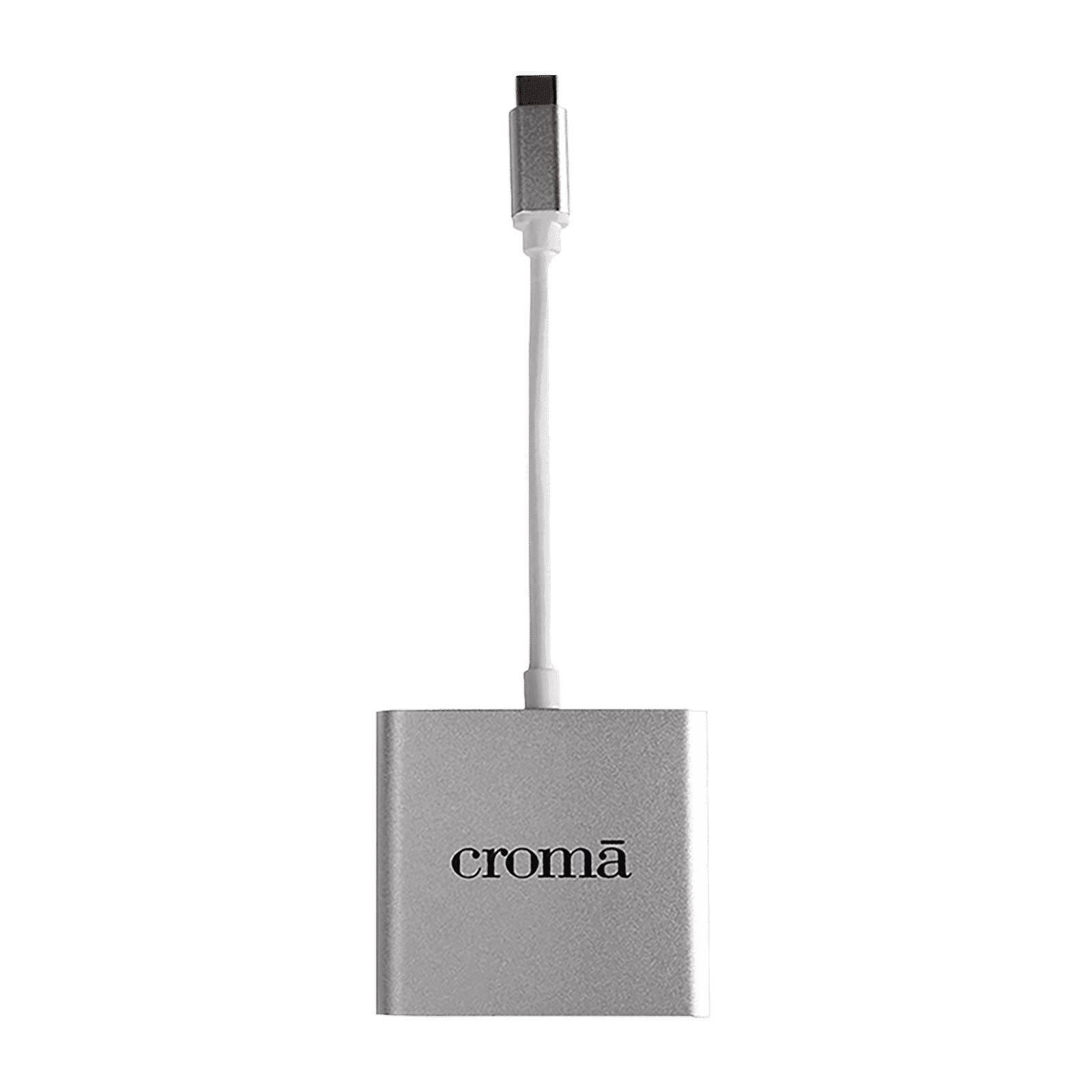%20(Presentation)%20(1600%20x%20600%20px)(104)-e7981044-6d08-4425-b3f9-f97c6bfbc443.webp&w=3840&q=75)
Consumer Electronics
•03 min read

Buy Croma USB 3.0 Type C to USB 2.0 Type A, USB 3.0 Type C, HDMI Type A USB Hub (High-Quality Material, Silver) online at best prices from Croma. Check product details, reviews & more. Shop now!
In the ever-evolving world of electronics, USB Type A continues to be a fundamental connector for countless devices. Whether you are a tech enthusiast or a young professional, understanding what is USB A type is essential for making informed decisions on your next gadget purchase. This checklist provides a clear and concise guide to the basic design, compatibility, usage, and differences compared to USB Type C.
USB Type A is one of the original USB connector designs and remains a staple in consumer electronics. Recognisable for its rectangular shape and standardised design, this connector is incredibly reliable and has found its home in a myriad of applications. In devices ranging from computers to printers and cameras, the standard USB Type A connector has proved its worth over time.
This connector features a well-structured plug design with a specific pin configuration that ensures durability and reliable performance. Its simplicity and robust design contribute to its long-standing relevance, making it a dependable choice for connecting peripherals across various devices.
The standard USB Type A connector is celebrated for its broad compatibility. It works effortlessly with computers, keyboards, flash drives, and more. Supporting USB 2.0, 3.0, and later versions, it remains a reliable solution for data transfer and power delivery. The unidirectional plug design is engineered to fit one way only, which speaks to its simplicity and reliability.
A wide range of devices continue to rely on USB Type A for connectivity. Products such as external hard drives, printers, and various peripherals utilise this connector. Furthermore, its backward compatibility with older USB standards ensures that your legacy devices continue to work seamlessly.
Did You Know?
USB Type A connectors are among the most durable designs, capable of withstanding up to 1,500 insertion cycles without losing functionality.
The debate between USB A and USB C centers on design and performance. While USB Type C boasts a reversible plug design and faster data transfer speeds, USB Type A is still widely preferred when it comes to tried and tested compatibility. Those who face the question of what is USB A type often appreciate the robustness and familiarity of the legacy rectangular design.
As modern devices increasingly feature USB Type C ports, there may be concerns regarding USB A port compatibility. Many users overcome this challenge with the help of adapters or dual-connector devices. This ensures that even when upgrading to newer technology, you can continue to use that reliable USB Type A cable for various applications.
USB Type A has cemented its place as a favourite for connecting everyday peripherals, such as mice, keyboards, and external storage devices. Its role is not confined to data transfer; it also facilitates charging of devices where other connectors might not be as prevalent. If you are looking for a straightforward USB Type A connection explained, it is a versatile option that marries functionality with simplicity.
There are several types of USB Type A cables available in the market, including USB 2.0 and USB 3.0 variants. The type of cable you choose can affect the speed and power delivery of your data transfer. It’s always a good idea to match the cable type with your device’s needs to ensure optimum performance and safety for your electronics.
While the trend is moving towards USB Type C due to its advanced features like reversibility and faster speeds, USB Type A still holds a significant position. Many industries and devices rely on the durability and wide compatibility of this older, yet trusted design. For many users, the enduring convenience of the standard USB Type A connector makes it a preferred option even as technology evolves.
The versatility of USB Type A ensures that it continues to act as a bridge between older devices and modern technology. Multi-port hubs and adapters often incorporate USB Type A to support a range of devices simultaneously. Maintaining this hybrid connectivity is key to a seamless tech experience, particularly for those who know the value of a reliable USB Type A connector in everyday use.
A Type-A USB stick is a storage device that features the standard USB Type A connector, known for its wide compatibility and straightforward design.
Type D USB is not an officially recognised USB connector category. USB connectors are usually classified as Type A, Type B, Type C, Micro USB and Mini USB.
USB Type A connectors are rectangular with a unidirectional design, whereas USB Type C connectors are smaller, oval-shaped and can be inserted either way.
In summary, the USB Type A connector remains a vital component in the world of consumer electronics. Its unmatched compatibility, reliability and longevity provide a seamless experience for connecting various devices. Educating yourself on the design, usage and future relevance of USB Type A can support smarter purchasing decisions and help you remain confident in your technology setup. The benefits of this evergreen connector are as clear as the rewards you earn through platforms like Tata Neu, where smart shopping is made easy and enriching with NeuCoins rewards.